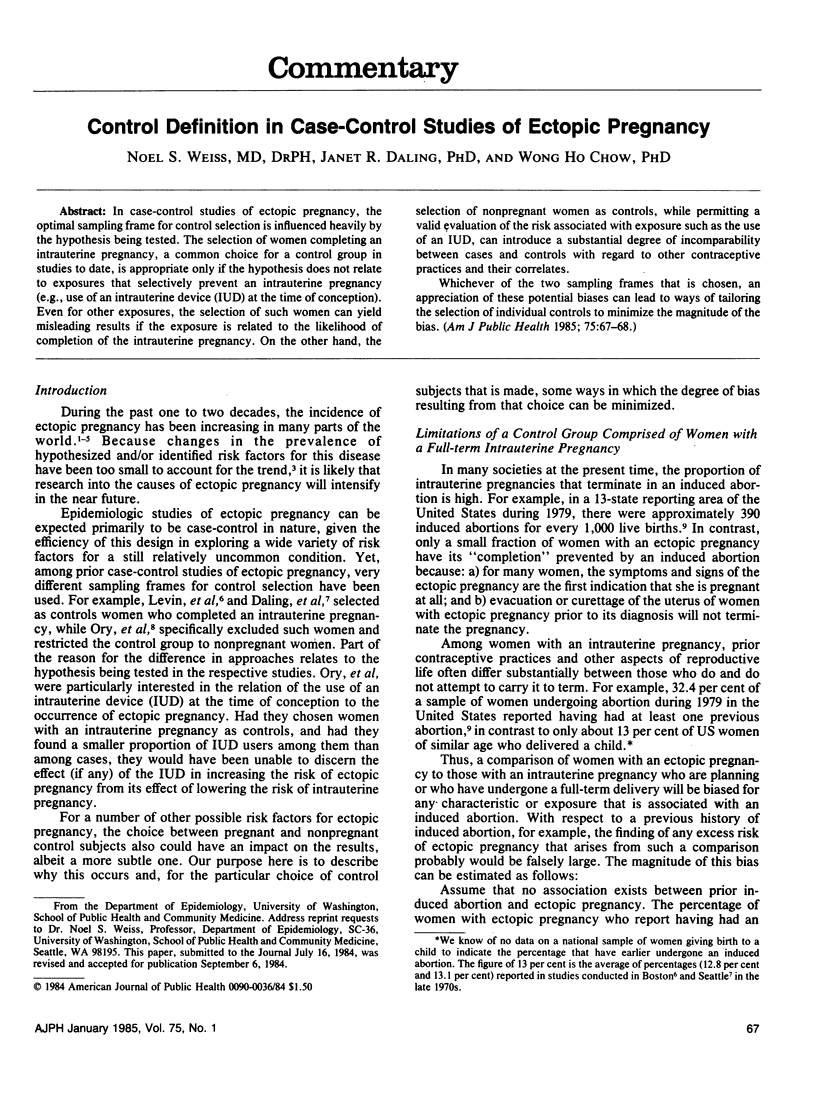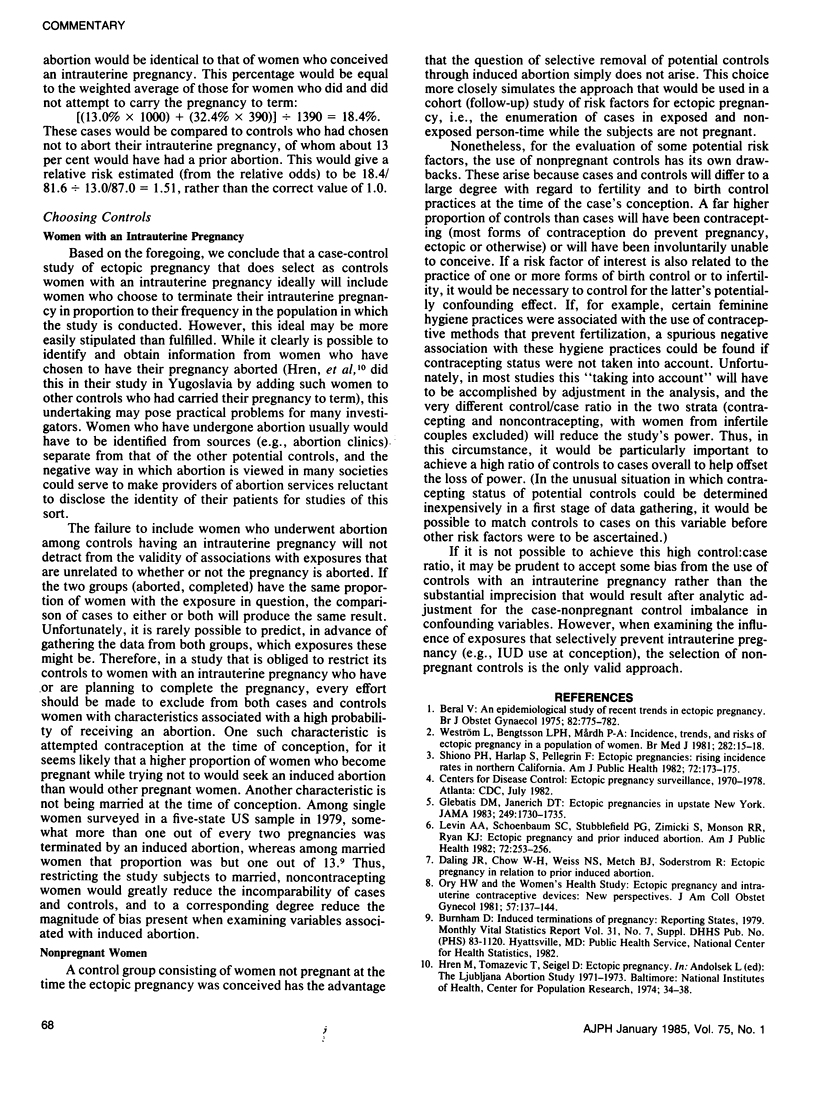Abstract
In case-control studies of ectopic pregnancy, the optimal sampling frame for control selection is influenced heavily by the hypothesis being tested. The selection of women completing an intrauterine pregnancy, a common choice for a control group in studies to date, is appropriate only if the hypothesis does not relate to exposures that selectively prevent an intrauterine pregnancy (e.g., use of an intrauterine device (IUD) at the time of conception). Even for other exposures, the selection of such women can yield misleading results if the exposure is related to the likelihood of completion of the intrauterine pregnancy. On the other hand, the selection of nonpregnant women as controls, while permitting a valid evaluation of the risk associated with exposure such as the use of an IUD, can introduce a substantial degree of incomparability between cases and controls with regard to other contraceptive practices and their correlates. Whichever of the two sampling frames that is chosen, an appreciation of these potential biases can lead to ways of tailoring the selection of individual controls to minimize the magnitude of the bias.
Full text
PDF

Selected References
These references are in PubMed. This may not be the complete list of references from this article.
- Beral V. An epidemiological study of recent trends in ectopic pregnancy. Br J Obstet Gynaecol. 1975 Oct;82(10):775–782. doi: 10.1111/j.1471-0528.1975.tb00572.x. [DOI] [PubMed] [Google Scholar]
- Glebatis D. M., Janerich D. T. Ectopic pregnancies in upstate New York. JAMA. 1983 Apr 1;249(13):1730–1735. [PubMed] [Google Scholar]
- Levin A. A., Schoenbaum S. C., Stubblefield P. G., Zimicki S., Monson R. R., Ryan K. J. Ectopic pregnancy and prior induced abortion. Am J Public Health. 1982 Mar;72(3):253–256. doi: 10.2105/ajph.72.3.253. [DOI] [PMC free article] [PubMed] [Google Scholar]
- Shiono P. H., Harlap S., Pellegrin F. Ectopic pregnancies: rising incidence rates in Northern California. Am J Public Health. 1982 Feb;72(2):173–175. doi: 10.2105/ajph.72.2.173. [DOI] [PMC free article] [PubMed] [Google Scholar]
- Weström L., Bengtsson L. P., Mårdh P. A. Incidence, trends, and risks of ectopic pregnancy in a population of women. Br Med J (Clin Res Ed) 1981 Jan 3;282(6257):15–18. doi: 10.1136/bmj.282.6257.15. [DOI] [PMC free article] [PubMed] [Google Scholar]


